What Is Hempcrete | Hempcrete Blocks | Advantages & Disadvantages of Hempcrete Blocks | Applications of Hempcrete
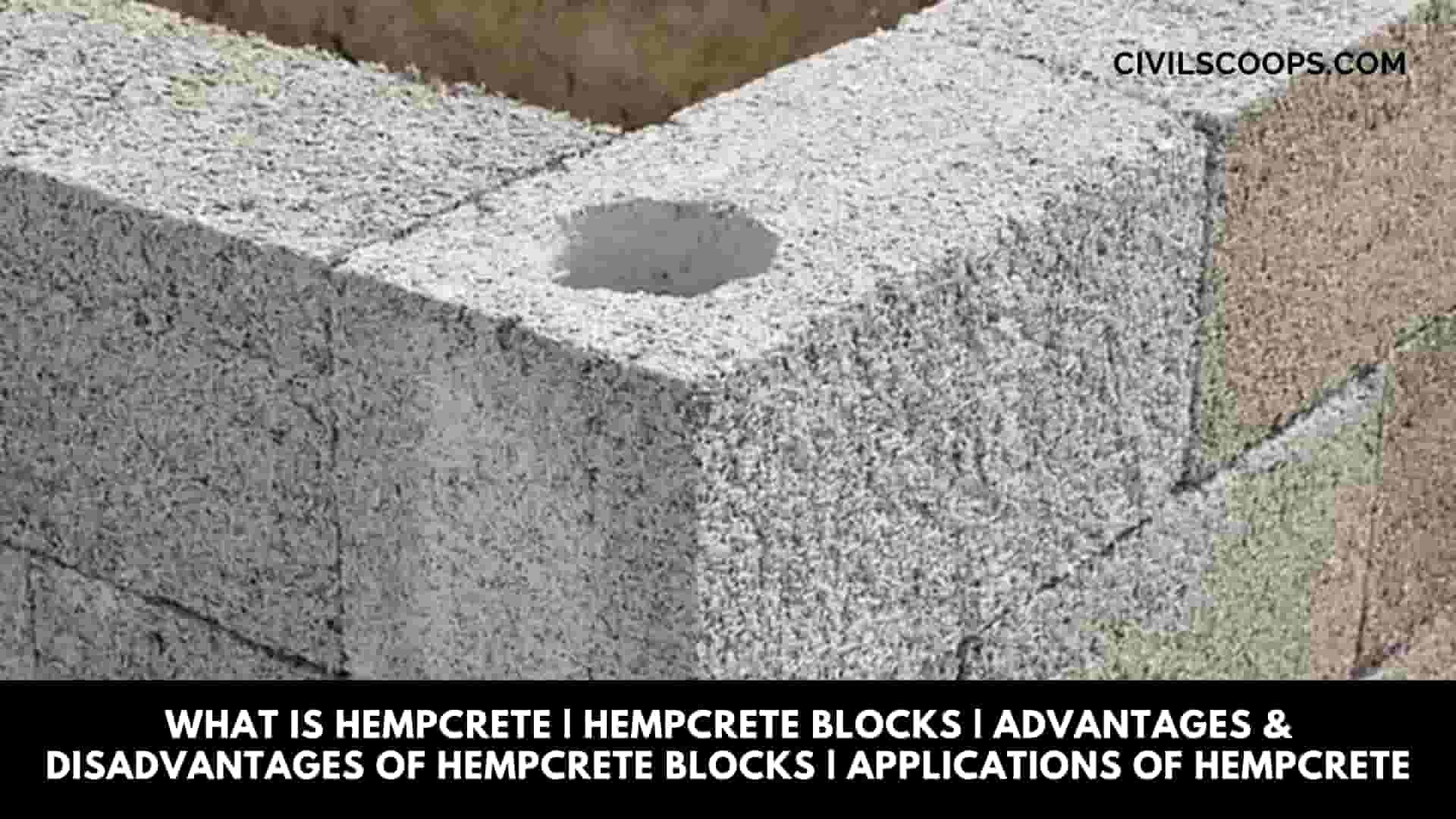
Table of Contents
What Is Hempcrete?
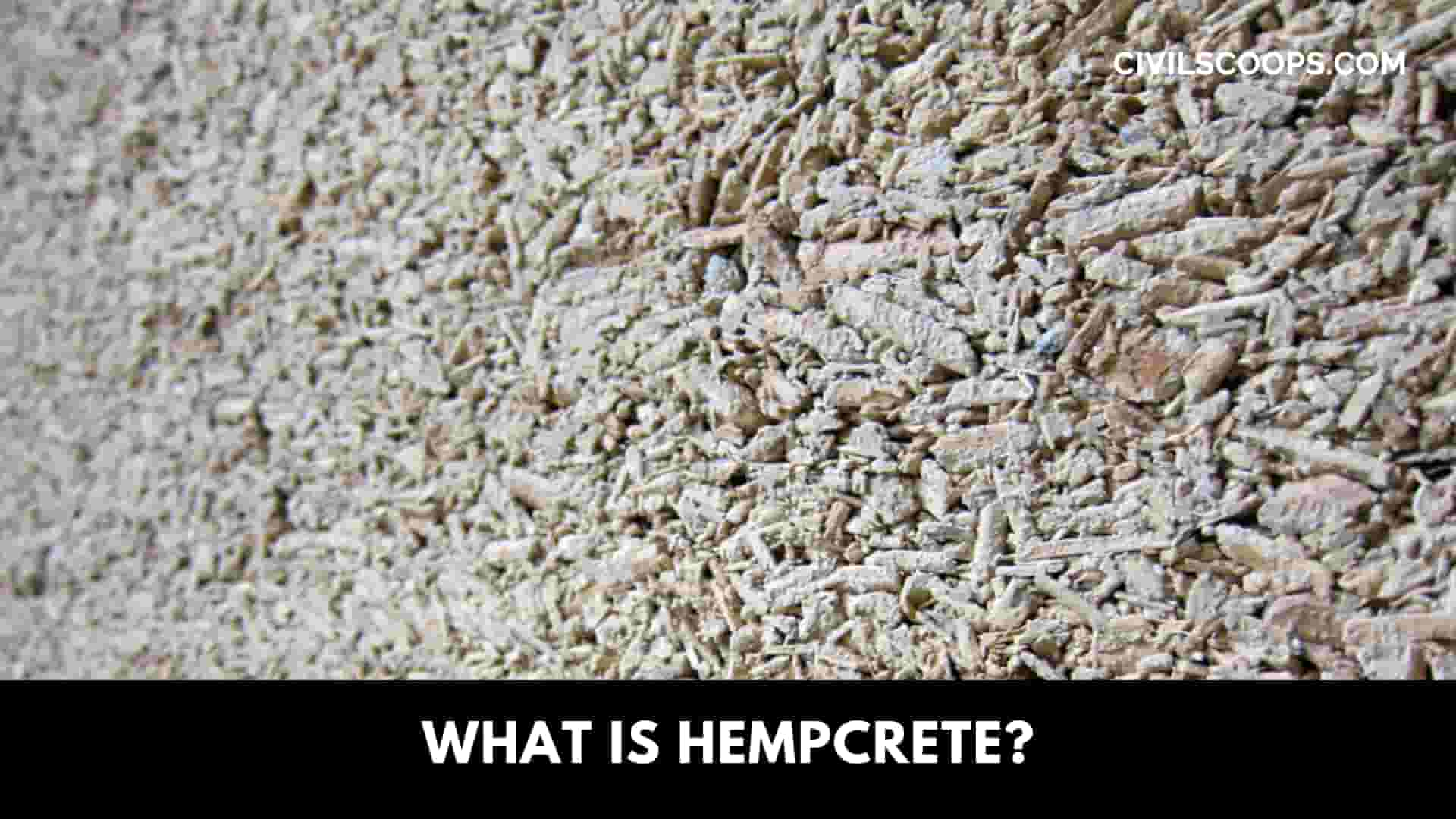
Hempcrete is a bio-composite that is made from the inner wood core of the hemp plant and mixed with the lime and other natural materials. It is also known as hemp-concrete.
Hemp is a plant that grown without any use of plant protection chemicals. It required a very little amount of water and it will also help to contribute to the agricultural regeneration of soil.
Hemp is an agricultural crop that is used for construction material the combination of lime and cement. It is the fastest-growing annual crop that has high tensile strength.
Hempcrete is basically a bio-based Construction material that is widely used to build, renovate, and restore various types of structures. Hempcrete has low density but it can be used for minor structural purposes.
Hempcrete is a carbon-negative material that consumes carbon which makes it an ecofriendly construction material.
Hempcrete is fully Recycled material which can be reused for making fertilizers. It has a low carbon footprint and environment-friendly construction material.
Also Read: What Is Septic Tank | How Does A Septic Tank Work | Septic Tank Design based Per User Consumption
Hempcrete Blocks
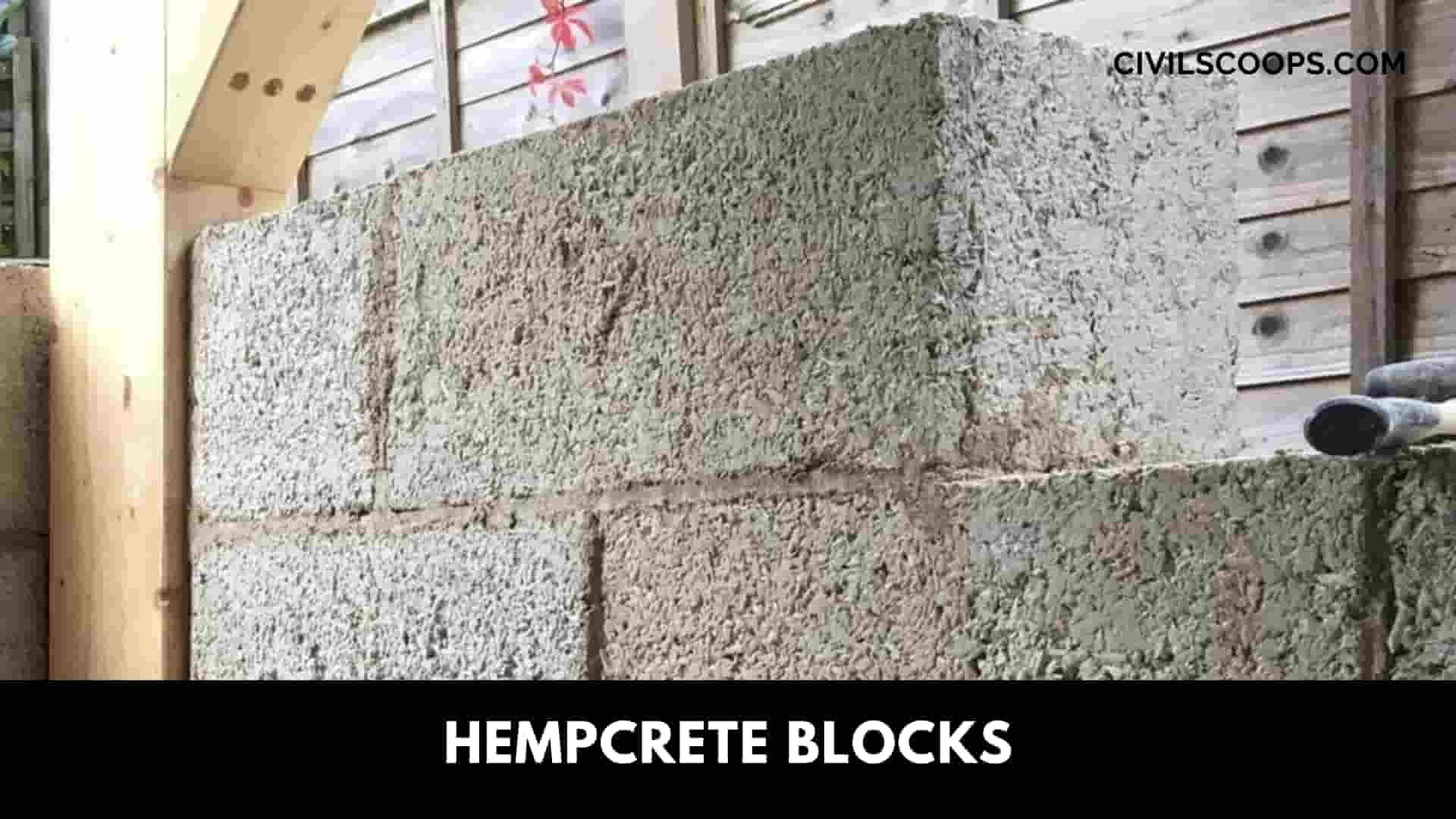
There are many products that are available in the market which are made up of Hempcrete. But Hempcrete blocks are widely used in the construction.
Hempcrete blocks are lightweight, durable, and have good insulation. Hempcrete blocks are generally used for insulation purposes.
Hempcrete consists of high silica content which helps to give high strength. The main function of the silica is to bind other natural materials with each other.
The density of hempcrete ranges from 300 to 900 kg/m3.
The compressive strength of hempcrete blocks is found to be around 1 Mpa.
Advantages of Hempcrete Blocks
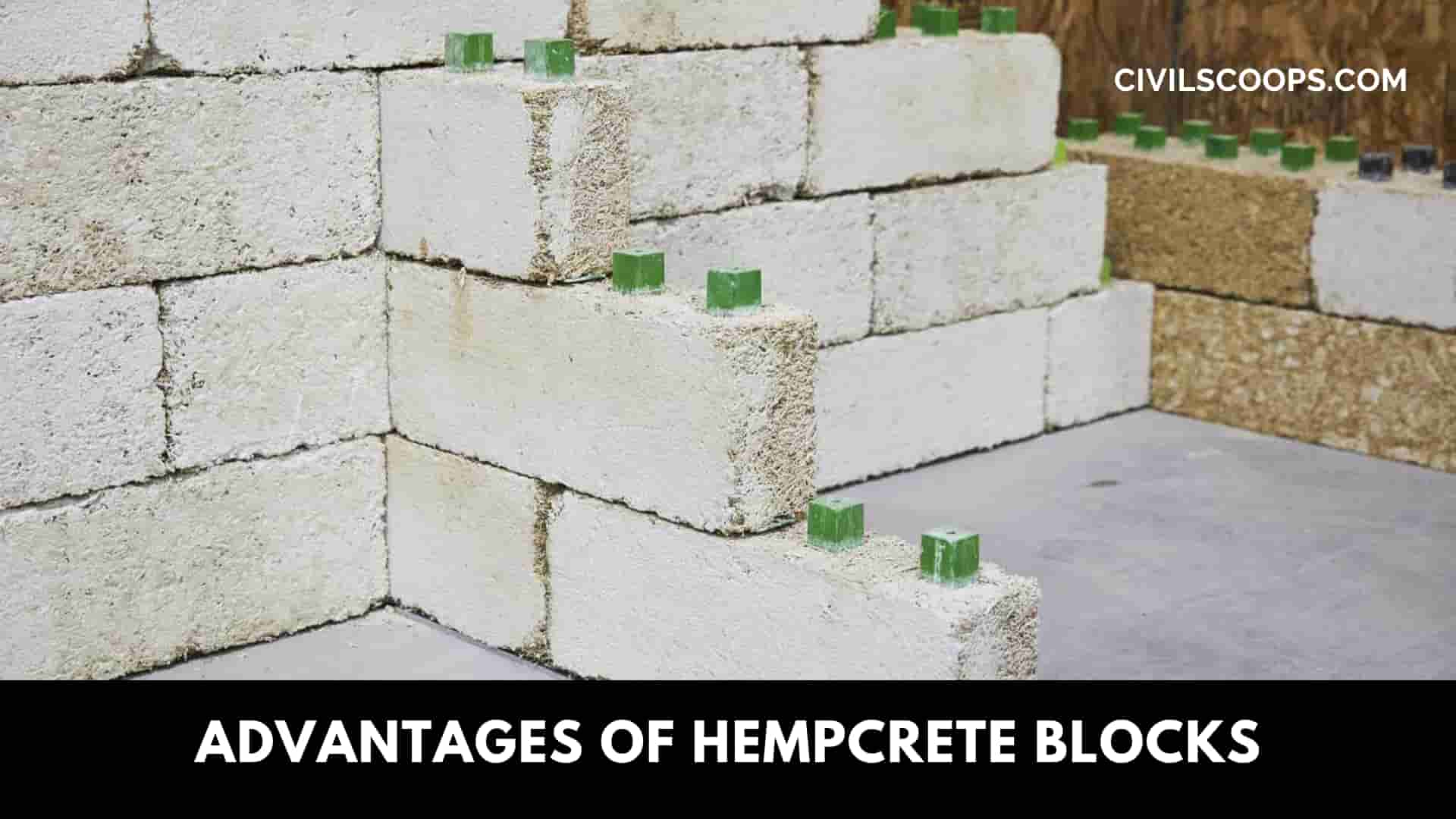
- Hempcrete blocks are eco-friendly and energy-efficient construction material.
- Hempcrete blocks help in the thermal regulation which regulates the temperature of the building.
- Hempcrete blocks are very light in weight and can transport easily from one place to another place.
- Hempcrete blocks help in contributes to the breathable walls.
- It is a disaster-resistant, which helps to ensure the safety of the buildings.
- It is a strong and durable eco-friendly construction material.
- Hempcrete blocks have good sound as well as heat insulation properties.
- Hempcrete blocks are fire resistance.
- Construction with the help of Hempcrete blocks is easy and fast.
- Hempcrete is a sustainable construction material.
- It provides a healthy indoor environment for the occupants.
- Hempcrete can be the best option for which is used in the Renovation of the buildings.
- It has high moisture handling capacity.
- It is also used for decorative work.
Disadvantages of Hempcrete Blocks
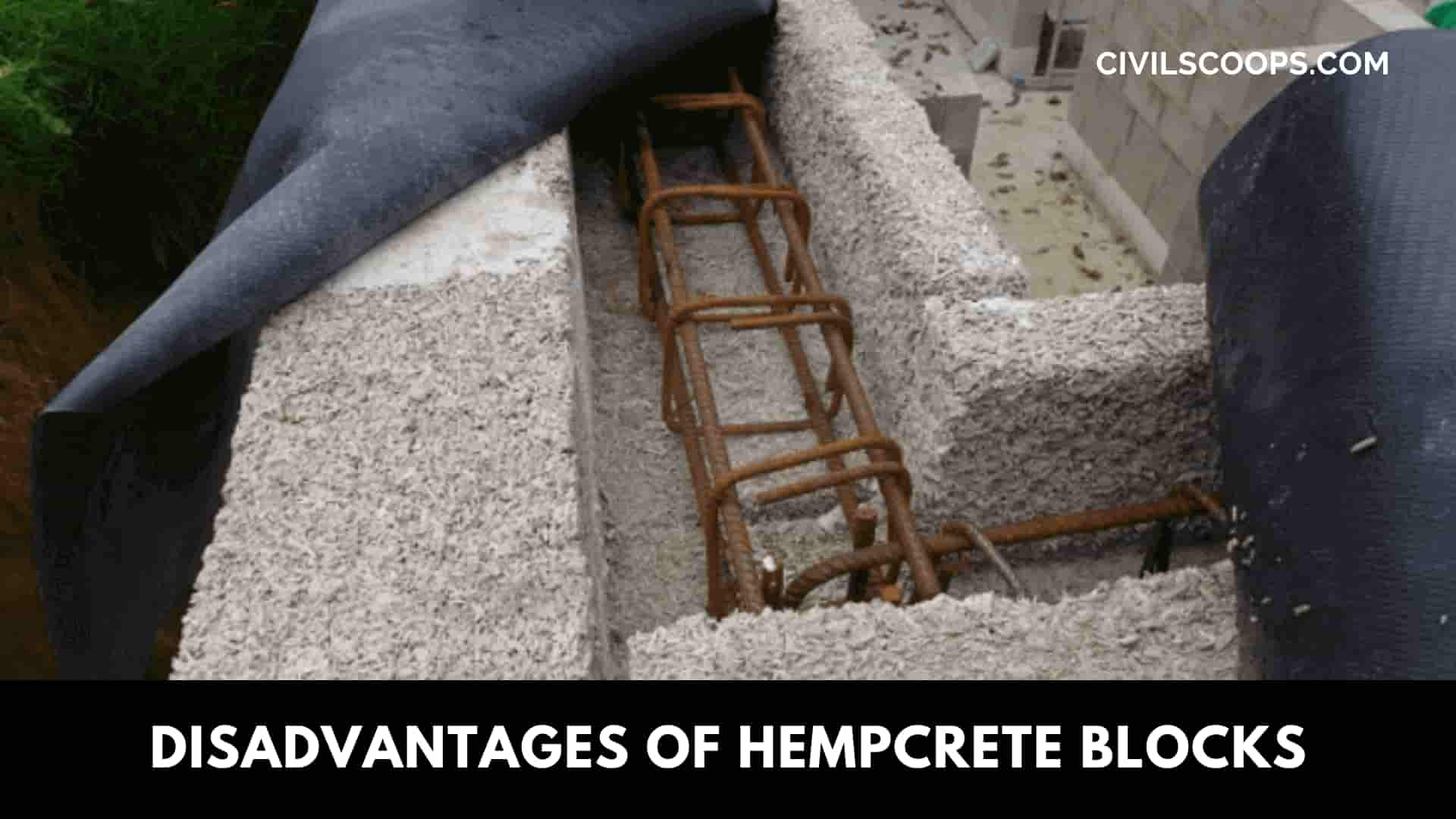
- Hempcrete walls are thicker in size as compared to other walls which reduce the carpet area.
- Hempcrete has low compressive strength.
- It also has low elastic modulus which makes it unsuitable for direct loads.
- It cannot be used for heavy loads, it requires frames to carry loads.
- The raw material required for Hempcrete does not grow everywhere.
- Hempcrete cannot be used in the foundation of the buildings.
- Hempcrete is not readily available as compared to the concrete, because it is difficult to find hemp.
- Builders have a lack of knowledge about Hempcrete Construction.
Applications of Hempcrete
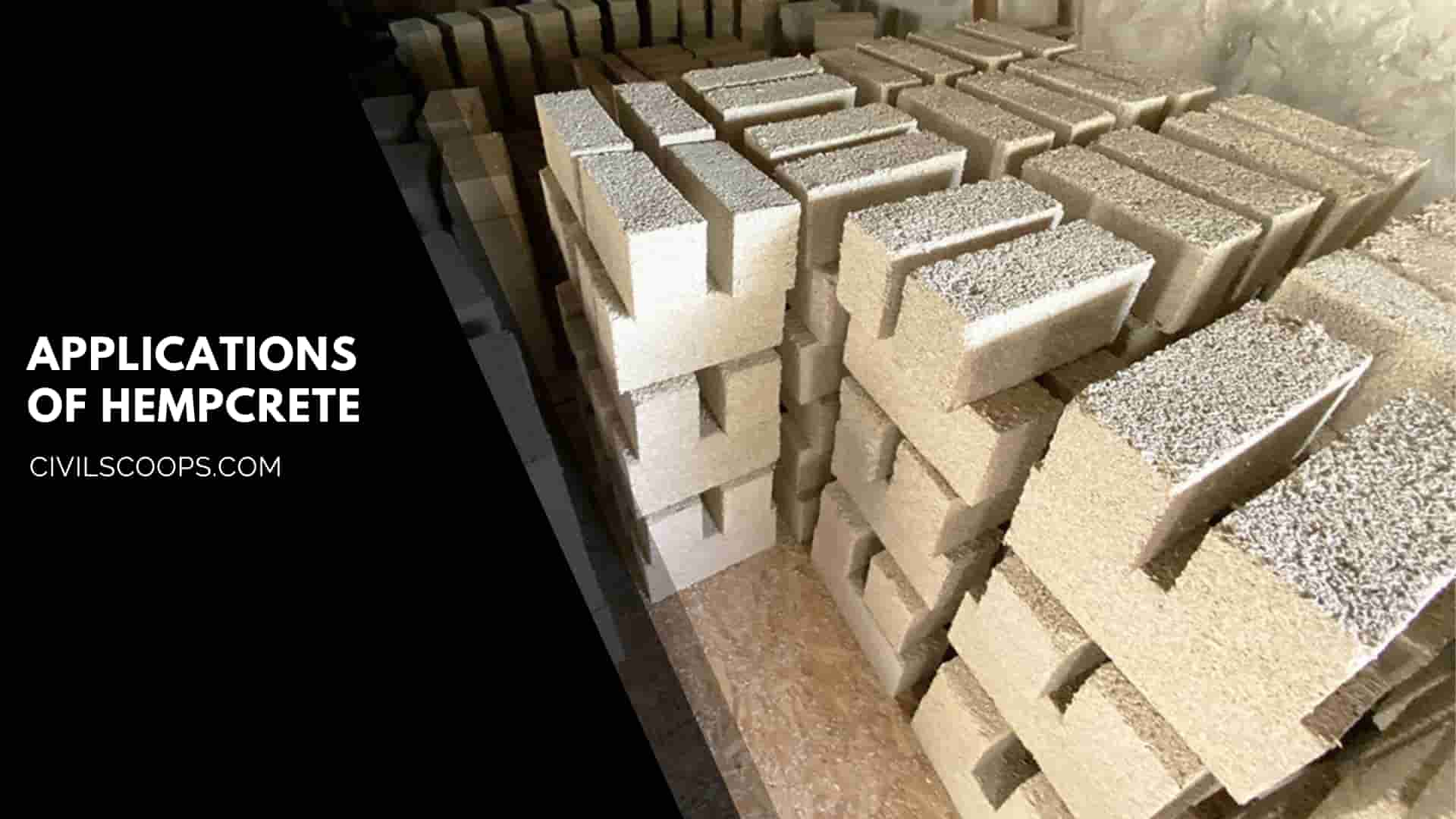
- It is widely used in the Extension or Renovation of the buildings.
- It is used for insulation for the old buildings.
- It is also used for plastering work.
- It is lightweight so that it is the best option where the dead load of the building is required to be less.
- It is used for floor as well as roof insulation.
- It is also used in the external and internal insulation of the buildings.
- It is used for creating an air-tight seal around the home.
Hempcrete Construction
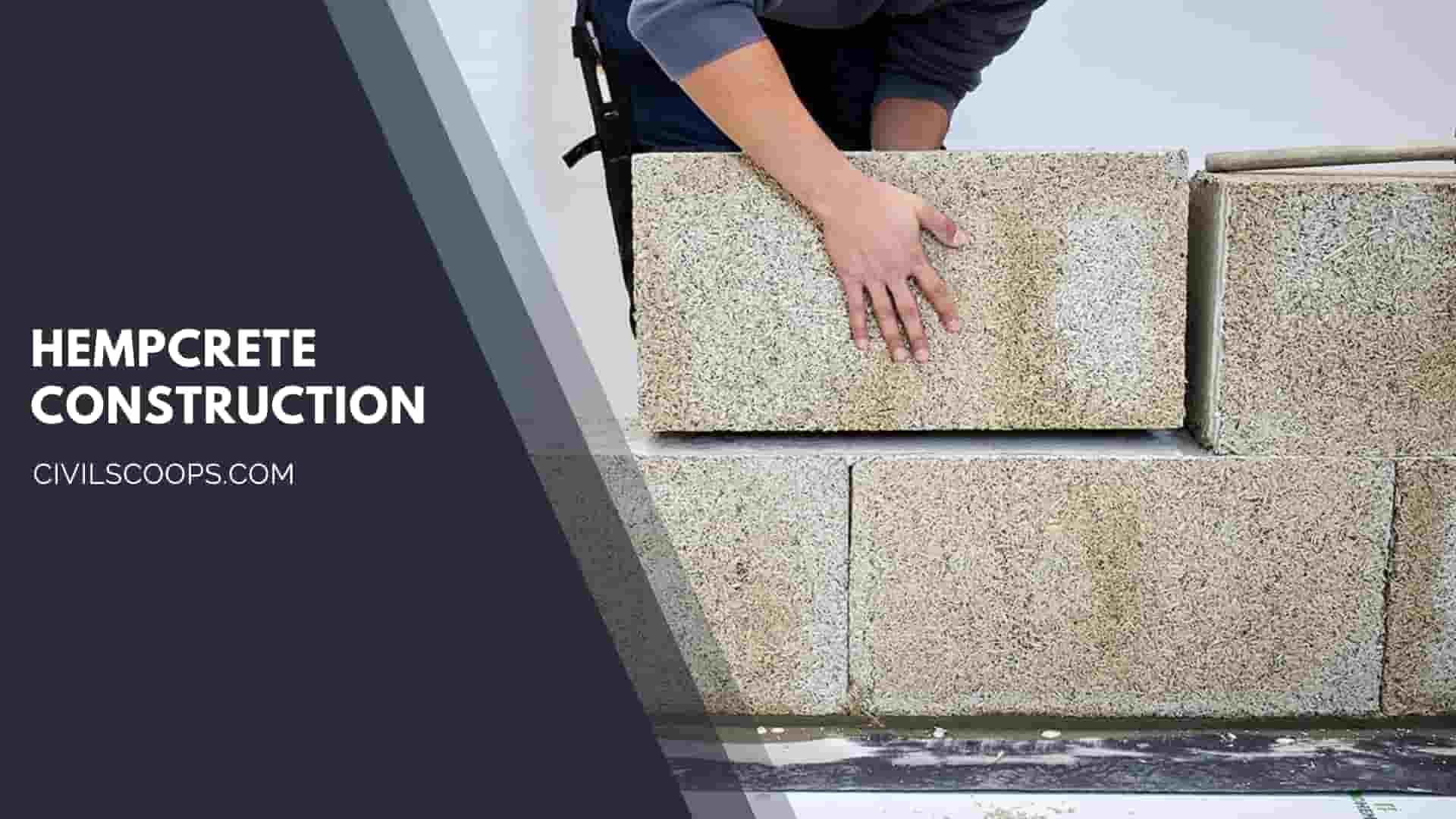
Hempcrete is a natural Construction material which comes with excellent insulation properties.
Hempcrete was constructed by mixing the raw materials on the site and placing that mixture in the formwork.
Nowadays there is an increase in the demand of Hempcrete due to its various excellent properties.
There are many Hempcrete products are available in the market among which the Hempcrete is one of the best and widely used Hempcrete product in the Construction.
Here are the steps which are used while the Construction of the Hempcrete blocks.
Mixing of Hempcrete
The raw materials like hemp shives, lime and water are mixed properly in the right proportion.
Moulding of Hempcrete
The mixed Hempcrete is then fill in the mould and compacted properly so that the air voids get removed.
Curing of Hempcrete
After that, the blocks are kept for curing in the open air. Curing is very important, which gives strength and hardness to the Hempcrete blocks.
Hempcrete Bricks
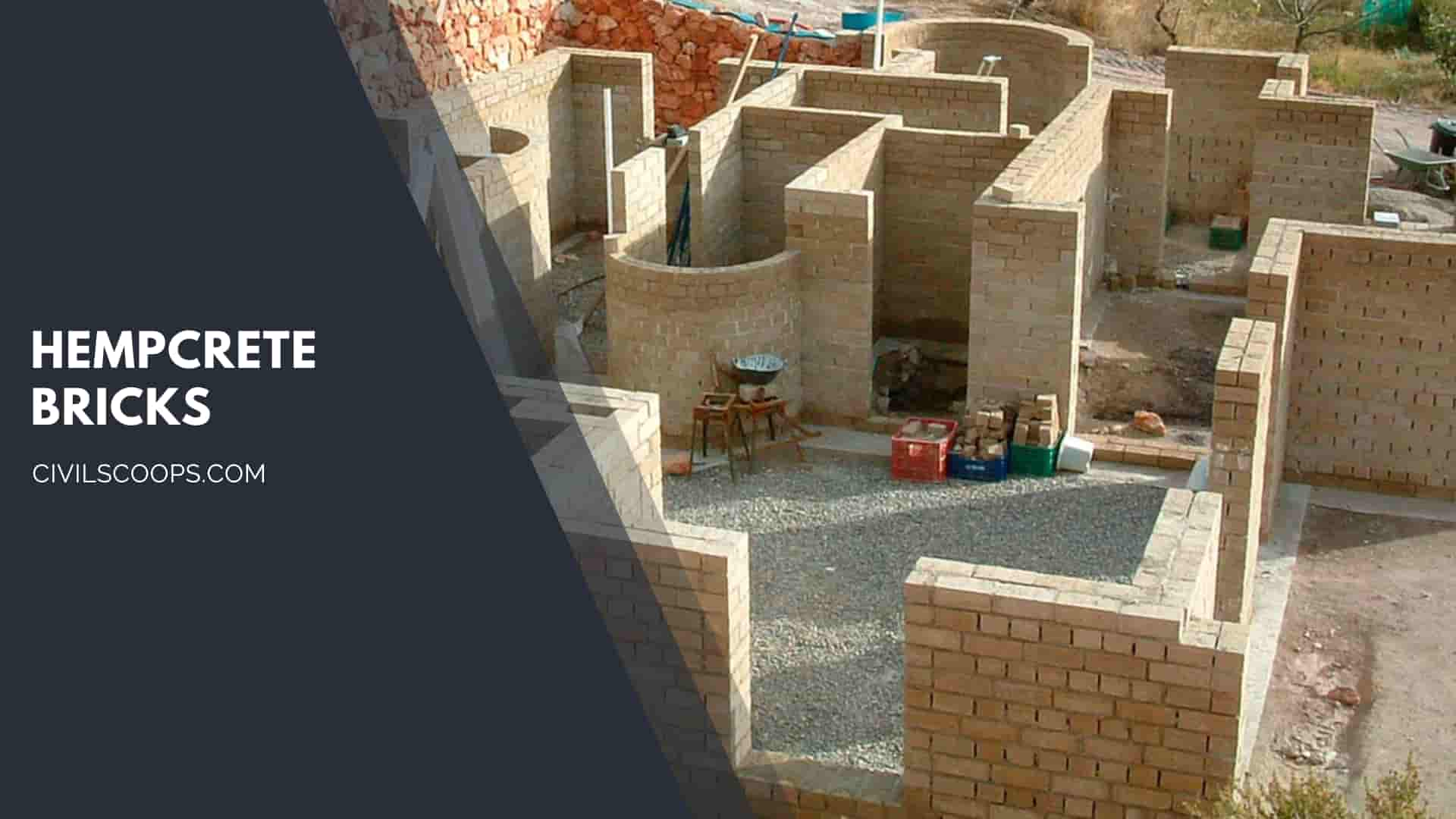
Hemp brick is a solid piece of construction material that is made up of fibre. Hempcrete brick is a natural eco-friendly construction material that is widely used for the construction of green buildings.
The benefit of hempcrete bricks is that it is fire resistance. Once the mixture set it will not catch fire.
Hempcrete bricks are energy efficient and sustainable construction material.
The walls which are made from hempcrete generally range from 250 mm to 500 mm thick in size. Due to this thickness, there is less carpet area, it is good in thermal and acoustic performance.
The bricks which are made from hempcrete does not use for load-bearing structure because hempcrete has low compressive strength.
How to Make Hempcrete Bricks?
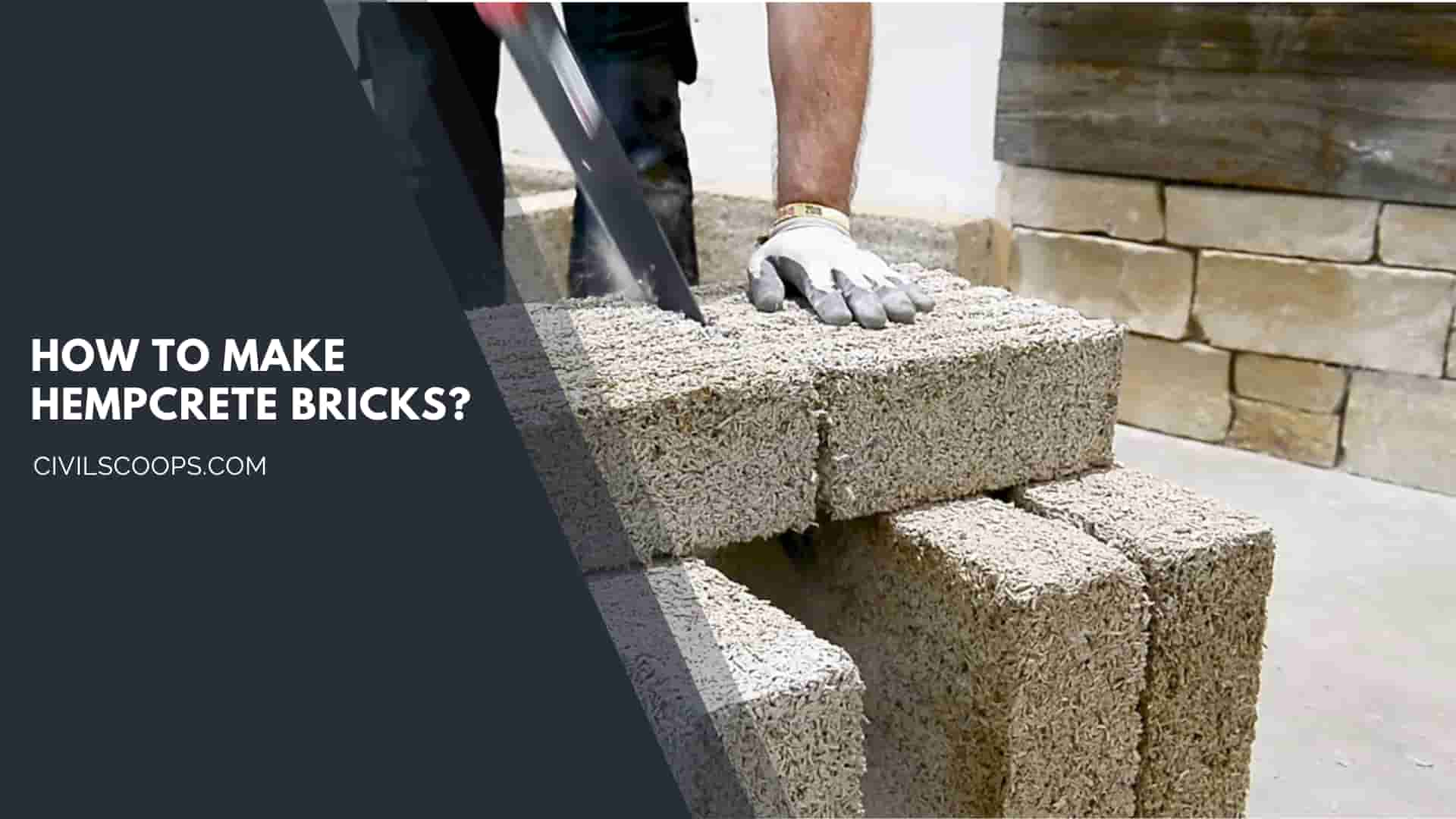
The process of making Hempcrete bricks is very easy and fast.
Hempcrete is properly mixed in the right proportion. The four parts of hemp and one part of lime which act as a Binder and one part of the water is used for making Hempcrete bricks.
Hempcrete bricks are durable and have various beneficial properties as compared to traditional bricks.
It helps to naturally regulate the building’s humidity and temperature and reduce condensation and energy consumption.
Hempcrete bricks also help to stay free from bacterial attacks.
Also Read:
Hempcrete Price
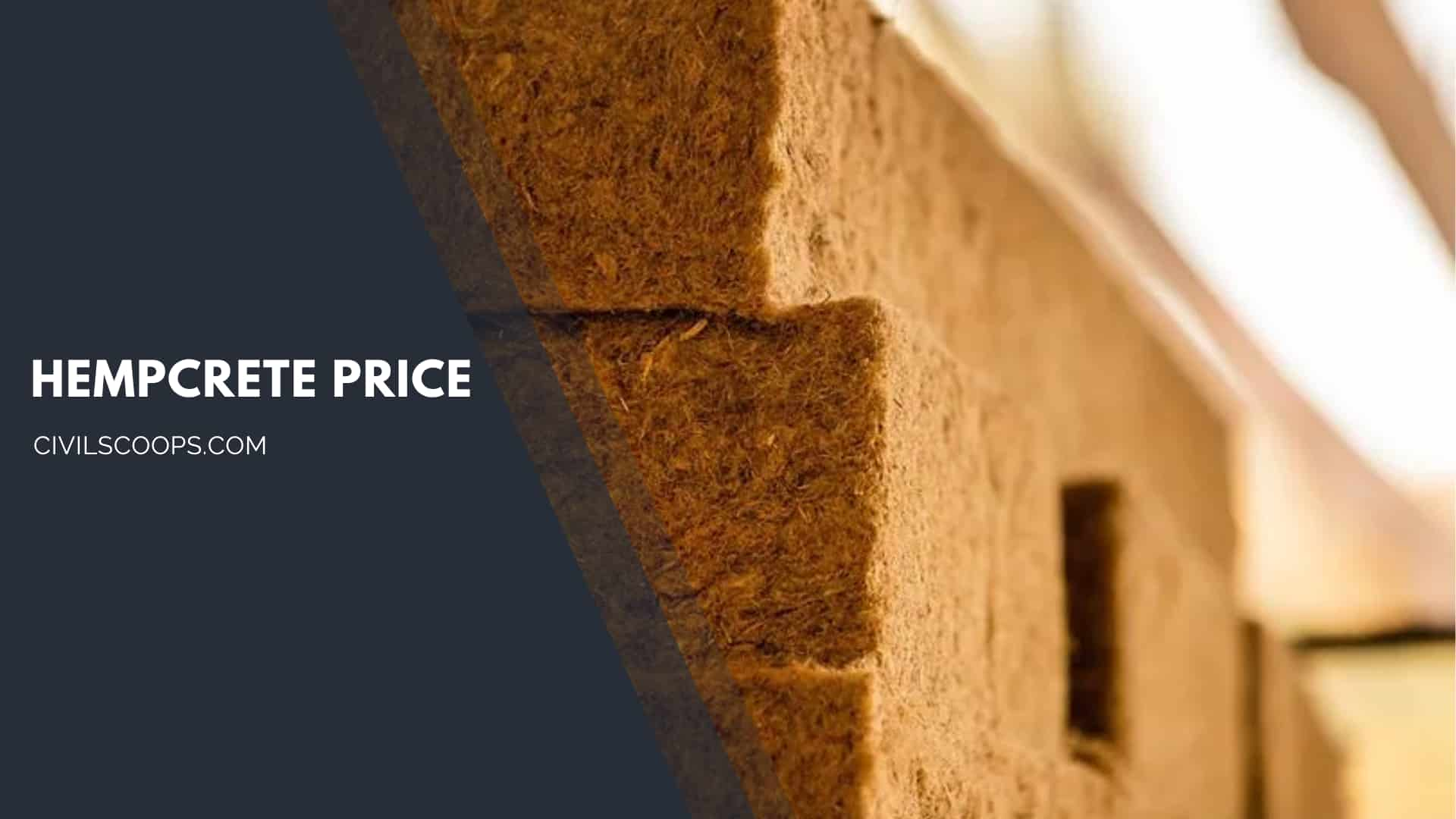
The Hempcrete price is a little bit high as compared to other Construction material. But it helps you to save money in the long term due to its energy efficiency and excellent properties.
It helps in the thermal insulation of the building. It helps to store heat and keep the indoor environment of the building cool and clean.
[su_table responsive=”yes” alternate=”no”]
| Sr. No. | Size of Block | Shape | Weight In Kg. Per Block | Rate | Unit |
| 1 | Hempcrete Block 60 mm thick |  |
5.5 blocks / m2 | €36.34 | Sq.M. |
| 2 | Hempcrete Blocks 90 mm thick |  |
5.5 blocks / m2 | €45.20 | Sq.M. |
| 3 | Hempcrete Blocks 120 mm thick |  |
5.5 blocks / m2 | €61.47 | Sq.M. |
| 4 | Hempcrete Blocks 150 mm thick |  |
5.5 blocks / m2 | €71.95 | Sq.M. |
| 5 | Hempcrete Blocks 200 mm thick |  |
5.5 blocks / m2 | €95.10 | Sq.M. |
| 6 | Hempcrete Blocks 300 mm thick |  |
5.5 blocks / m2 | €135.65 | Sq.M. |
[/su_table]
[su_box title=”Note” style=”default” box_color=”#333333″ title_color=”#FFFFFF” radius=”3″ class=”” id=””]
Hempcrete
Hempcrete also known as hemplime, is a bio-composite material that can be used in construction as an alternative to materials such as concrete and traditional insulation. The basis of hempcrete is hemp, the balsa wood-like core (or ‘Shiv’) of a cannabis Sativa plant.
Hempcrete Bricks
Hempcrete, as the name suggests, replaces the cement part with hemp shives. … The benefits of the hempcrete bricks is that they’re lightweight (easier to transport), fireproof, serve as natural insulators that also regulate moisture, and they’re eco-friendly–hemp plants lock up C02 as they grow.
Disadvantages of Hempcrete Blocks
Hempcrete also takes up to eight weeks to dry and is affected by weather changes. Perhaps the main drawback is the low rate of compressive strength. At a maximum, hempcrete’s compressive strength is 3.5 megapascals (MPa). In contrast, the lowest compressive strength of concrete is around 17 MPa.
Is Hempcrete Better Than Concrete?
Hempcrete is not stronger than concrete. It lacks the comprehensive strength associated with concrete as it’s lightweight and not dense. However, hempcrete is said to be a carbon sink, fire-resistant, pest-resistant, a strong insulator, stores, and releases moisture.
Is Hempcrete Any Good?
Non-toxic building material – Hempcrete is generally quite a benign material, fewer pesticides and herbicides are used for farming creating less environmental damage due to the use of toxins on the fields. Hempcrete stores heat in the thermal mass of its wall which is then released slowly as the building cools down.
How Long Does Hemp Concrete Last?
Therefore, a 12” hempcrete cast-in-place wall left exposed on both sides can be dry enough for plaster in 6 weeks, assuming optimal conditions. If the hempcrete is cast against a permanent form, then the cast-in-place drying time doubles to 12 weeks in optimal conditions.
Is Hempcrete Fireproof?
Hempcrete walls must be used together with a frame of another material that supports the vertical load in building construction, as hempcrete’s density is 15% that of traditional concrete. Hempcrete walls are fireproof, transmit humidity, resist mould, and have excellent acoustic performance.
Is Hempcrete Flammable?
Hempcrete walls are fireproof, transmit humidity, resist mould, and have excellent acoustic performance.
How Thick Are Hempcrete Walls?
Hempcrete wall systems are highly insulative and act as thermal mass. Walls that are typically 12” thick provide requisite R-Value (~2.5/in.)
How Long Will Hempcrete Last?
If the hempcrete is cast against a permanent form, then the cast-in-place drying time doubles to 12 weeks in optimal conditions. This home is an 11” cast-in-place wall, and our summer thus far has been hot and humid. However, during the past week, we’ve experienced a great deal of rain and damp conditions.
Can Hempcrete Be Load Bearing?
Hempcrete takes time to cure so it is not good to use for load–bearing walls. However, many companies have started making hempcrete bricks in a way that takes less time to cure so it can be used for load–bearing walls.
How Much Is Hempcrete Vs Concrete?
Hempcrete is more expensive than concrete. Hempcrete costs, on average, $135 per square meter, whereas concrete costs $85 per square meter. However, hempcrete is a better regulator of temperature in the home as well as being ideal in humid conditions as it is mold and mildew resistant.
What Are the Benefits of Hempcrete?
Hempcrete breathes, allowing moisture to evaporate (no mold), does not off-gas, and is avoided by termites. The non-toxic and lightweight properties of hempcrete also ensure it is easy to move around a job site.
Can Hempcrete Replace Concrete?
Hempcrete can replace standard concrete. Hempcrete is a material that has been around for a long time. Further, it is said to be more sustainable than concrete and a carbon sink. Hempcrete can also be reused through milling and rehydration.
Is Hempcrete Safe?
Hempcrete is a non-toxic, bio-composite material that, once cured, does not emit byproducts in an indoor environment. Overall it is considered a safe material.
Can You Screw into Hempcrete?
It’s best to think of hempcrete as a solid walling material with insulative and thermal mass properties. Plasterboard can be screwed directly into the hempcrete. For heavier sheet goods or assemblies, you should screw directly into the embedded studs.
Is Hempcrete Stronger Than Steel?
The hemp plastic used by Henry Ford was ten times stronger than steel. Recently, a Canadian research team developed hemp-based graphene that is stronger and cheaper than carbon fiber, which is 300 times stronger than steel.
Can Hempcrete Be Used for Foundations?
More like drywall than concrete, hempcrete can‘t be used for a foundation or structure; it’s an insulation that needs to breathe, said Joy Beckerman, a hemp law specialist and vice president of the Hemp Industries Association , a trade group.
How Is Hempcrete Disposed of Once It Has Been Used?
This paper examines the research behind the use of hempcrete, which is a bio-aggregate concrete made from lime and hemp shiv. Hempcrete is a sustainable building material that is made with a low environmental impact that removes waste production, decreases both energy use and the consumption of natural resources.
Is Hempcrete Toxic?
Non-toxic building material — Hempcrete is generally quite a benign material, fewer pesticides and herbicides are used for farming creating less environmental damage due to the use of toxins on the fields.
Is Hempcrete Cost-Effective?
Hempcrete does cost about the same as conventional materials in most situations. But sometimes it can save money like if you can’t build a strip foundation, hempcrete buildings have a lower density so you could build a raft foundation, which is cheaper than a massive concrete slab.
How Much Does It Cost to Build with Hempcrete?
So where it may cost an average of $120 per square foot on a traditional build, a hempcrete structure may cost $180 per square foot or more.” That said, heating and cooling costs may well be lowered thanks to the thermal insulation properties of hempcrete, Knutsen notes.
Why Is Hempcrete Fire Resistant?
However, the density and nature of hempcrete, with the plant-derived component encased within its lime binder, means it is very difficult to set fire to it.
How Do You Make a Hempcrete Wall?
Constructing a hempcrete wall is actually a lot simpler than might be thought. The three ingredients are hemp hurd, lime, and water. Use four parts hemp hurd with one part lime binder and then one part water. Added all together they form an incredibly durable material.
How Thick Should Hempcrete Walls Be?
At its website, American Hemp says that hempcrete has an R-value of 2.08 per inch (or R-25 for a 12-inch-thick wall).
Is Hempcrete Termite Proof?
Yes, Hempcrete is termite resistant.
Advantages of Hempcrete Blocks
Hempcrete breathes, allowing moisture to evaporate (no mold), does not off-gas, and is avoided by termites. The non-toxic and lightweight properties of hempcrete also ensure it is easy to move around a job site.
Applications of Hempcrete
Hempcrete is made from lime and hemp shivs (a waste product from hemp fiber growing); it can be used for walls, floors, and for roof insulation; it’s breathable, absorbing and emitting moisture to regulate internal humidity and avoid trapped moisture and mold growth.
[/su_box]
[su_box title=”FAQ” style=”default” box_color=”#333333″ title_color=”#FFFFFF” radius=”3″ class=”” id=””]
What Is Hempcrete Made Of?
Like its namesake concrete, hempcrete is a material mixed with a binder that hardens it into a solid in the form of blocks and panels. Made from the dried woody core of hemp stalks and a lime-based binder, hempcrete can be cast just like concrete.
What Is the R Value of Hempcrete?
Hempcrete’s R-value (its resistance to heat transfer) can range from 0.67/cm (1.7/in) to 1.2/cm (3.0/in) , making it an efficient insulating material (the higher the R-value, the better the insulation).
Is Hempcrete Better Than Concrete?
However, Hempcrete can also be used to build houses, with the use of hemp blocks. Hemp blocks ensure humidity regulation, acoustic insulation, as well as protection and fire resistance. It’s ten times stronger than concrete and one sixth of the weight!
How Long Will Hempcrete Last?
Hemp mixed with a lime binder makes green builders drool. Called hempcrete, this insulation material resists mold, fire and pests. It lasts forever (or close enough).
What Is Hempcrete Used For?
Hempcrete is one of those bio-based materials that can be used to build, renovate and restore all types of building, from houses and apartment blocks to service and public sector buildings and all types of built heritage, from traditional buildings to listed historic buildings.
How Much Does Hempcrete Cost?
Cons of using hempcrete
So where it may cost an average of $120 per square foot on a traditional build, a hempcrete structure may cost $180 per square foot or more.
How Much Does It Cost to Build a Hemp House?
Generally, whatever the standard price is for build per square foot, add a minimum of $60 to that. So where it may cost an average of $120 per square foot on a traditional build, a hempcrete structure may cost $180 per square foot or more.
Hempcrete Disadvantages
The main drawback of hempcrete with regard to safety is the alkaline and irritant nature of the hemp binder (lime). Care should be taken to avoid inhaling the dust and getting it onto the skin and into the eyes.
Is Hempcrete Cheaper Than Concrete?
While the strength isn’t there yet for a building’s foundation, hempcrete has many advantages over concrete. When it comes to hempcrete vs. concrete, hemp is the more affordable building material, more sustainable for the planet, and more efficient as insulation for a building.
[/su_box]
[su_note note_color=”#F2F2F2 ” text_color=”#333333″ radius=”3″ class=”” id=””]
Like this post? Share it with your friends!
Suggested Read –
- How Cement is Made | Cement Ingredients | History of Cement
- All About of Corrosion | What Is Corrosion | 9 Different Types of Corrosion
- Quality Testing of Sand for Concrete | Quality Testing of Sand for Construction | Types of Sand Test
- What Is Hard Hat | Hard Hat Colour Definition | Different Hard Hat Colour Codes | Types of Safety Helmets | Classification of Hard Hats
- What Is Pier and Beam Foundation | Advantages & Disadvantages of Pier and Beam Foundations | Pier and Beam Foundation Design | How to Build a Post and Pier Foundation
[/su_note]
Originally posted 2023-03-30 10:41:42.
